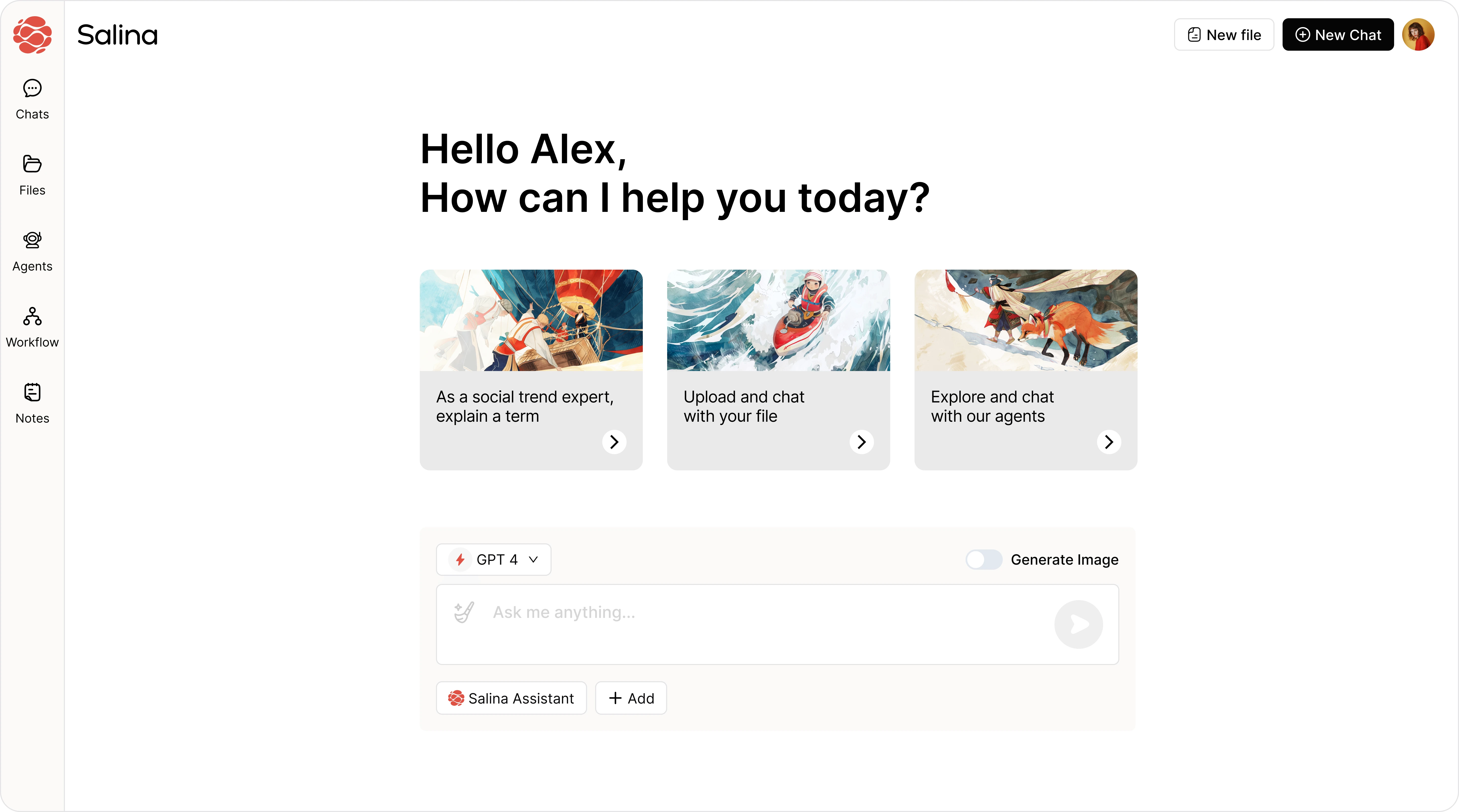
Content creators and digital marketers constantly seek new ways to extend the lifecycle of their content and maximize its impact. Imagine if one piece of content could continue to drive traffic, engage readers, and provide value long after its initial publication. This is the magic of identifying your evergreen content and ensuring it’s ready to be repurposed.
Imagine this: after spending countless hours crafting a captivating blog post, it performs exceptionally well for a few weeks. Traffic surges, engagement peaks, but eventually, it fades into the archives of your website. As a blog writer, this scenario is all too familiar to me. In fact, it’s precisely what will happen to this post once I finish writing it.
That’s why I plan to repurpose it, merging several blog posts into an Ultimate Content Repurposing Guide you should definitely keep an eye out for.
Why do I do this? Because I refuse to let my quality content fade away. I make it a point to breathe new life into it, ensuring it remains relevant and valuable to both new and existing readers. And you can do the same, no matter what type of content you create.
Relevance of Content Repurposing
Content repurposing is a strategic approach to maximize the potential of your existing high-quality content. By transforming a single piece of content into various formats, you can reach a wider audience, cater to different preferences, and extend its longevity. This not only saves time and resources that would otherwise be spent on creating entirely new content but also ensures that your valuable content continues to drive traffic and engagement long after its initial publication.
Think of repurposing not merely as recycling your existing content, but as reiterating your message in different forms. Why say things more than once? Well as the quote from the esteemed American author Seth Godin suggests,
“Delivering your message in different ways, over time, not only increases retention and impact, but it gives you the chance to describe what you’re doing from several angles.”
Importance of Identifying Your Evergreen Content
Evergreen content is timeless, remaining relevant and useful to your audience regardless of current trends or seasons. By focusing on identifying and repurposing content that is evergreen, you can establish your brand as an authority, build trust with your audience, and drive consistent traffic and leads over time. Evergreen content provides a strong foundation that can be repurposed and updated as needed, saving you time and resources in the long run while fostering a loyal following.
To identify truly evergreen content, the topic you must be in search of should not only be evergreen—meaning it is not time-sensitive—but also remain pertinent over time. This LinkedIn post expresses this concept. Supporting why repurposing your content across different platforms over time helps maintain it’s relevance, extend its reach and ultimately ensures itself of its evergreen essence succinctly.
Now that we understand the importance of repurposing and making content evergreen, let’s delve into the strategic steps you can follow to effectively transform your content.
A 5-Step Content Repurposing Checklist For Your Evergreen Content
1. Understanding Your Target Audience
Before embarking on content repurposing, you must cultivate a deep understanding of your audience. Knowing their core characteristics, motivations, and content preferences allows you to tailor your repurposed content effectively.
Analyze Demographic and Psychographic Data
Start by gathering demographic insights like age, gender, location, and occupation. Complement this with psychographic data that explore their interests, values, lifestyles, and behavior patterns.
Uncover Content Consumption Preferences
Determine how your audience prefers to consume content. Do they gravitate towards blog posts, videos, podcasts, or social media updates? Aligning your repurposed content formats with their preferences is important for better engagement and reach.
Actively Seek Audience Feedback
Implement mechanisms like surveys, polls, and direct interactions to collect audience feedback. Understanding which topics resonate most will guide your repurposing efforts, ensuring you deliver content that truly resonates.
Develop Comprehensive Buyer Personas
Create detailed buyer personas that encapsulate your target audience’s characteristics, behaviors, and pain points. This comprehensive approach ensures your repurposed content strategies are well-targeted and impactful.
The key is treating your audience as distinct individuals, each with unique needs and preferences. By deeply understanding your audience, you can repurpose content in a way that provides maximum value and engagement.
Once you clearly understand your target audience, the next step is to conduct a thorough audit of your existing content to identify pieces with the potential for repurposing.
2. Assessing Your Existing Content
Conducting a content audit helps identify what you already have and what has performed well.
Conduct a Content Audit
Review your existing content library and categorize each piece by type, topic, and performance. This involves systematically evaluating your content to understand what you have, what’s working, and what’s not. Tools like Google Analytics or specialized content audit tools like Ahrefs or Moz can help simplify this process.
Content audits can mean different things to different people. Check out Stephanie Trovato’s LinkedIn post, where the B2B writer and strategist for SaaS tech brands shares valuable industry insights on what content audits mean to various experts and what they might mean to you.
Identify Top-Performing Content Based on Engagement Metrics
Use analytics tools to pinpoint high-performing content—those with the highest traffic, shares, and engagement rates. This step is crucial as it highlights the content that resonates most with your audience, giving you a clear idea of which pieces are worth repurposing.
Analyze Content Gaps and Opportunities
Identify areas where your audience’s needs are not being met. Look for gaps that new content can fill. By identifying these gaps, you can create new content or adjust existing content to better serve your audience’s needs.
Evaluate Content Relevance and Evergreen Potential
Assess whether each piece has evergreen potential. According to Business News Daily, evergreen content is characterized by being informative, timeless, and consistently relevant. By focusing on creating evergreen content, you can ensure that your materials continue to attract and inform your audience well into the future.
With a clear understanding of which content pieces are worth repurposing, it’s time to explore how to transform these assets into new formats that continue to engage and attract your audience.
3. Repurpose High-Performing Content
Once you’ve identified your top-performing content, it’s time to breathe new life into it by repurposing it across different formats and channels. This strategic approach maximizes the value and reach of your best-performing assets.
Certain content formats lend themselves well to being repurposed into new assets, allowing you to maximize their value and reach. For instance, blog posts can be transformed into videos, podcasts, or infographics. Webinars can be converted into detailed blog posts or engaging slide decks.
Here are some best practices to bear in mind when repurposing content:
Repurposing Best Practices
As you repurpose, follow proven best practices to ensure consistency and quality:
- Maintain the core message and value proposition, adapting the content thoughtfully for each new format.
- Enhance the repurposed piece with fresh insights, examples, or updated information to provide new value.
- Optimize the content for the unique strengths of each format (e.g., visual storytelling for infographics, conversational tone for podcasts).
- Promote the repurposed content strategically on the appropriate channels to maximize its reach and engagement.
Examples of Effective Repurposing
To illustrate the power of repurposing, consider these proven tactics:
- Turn a comprehensive guide or deep-dive blog post into a multi-part video series, an engaging slideshow, or a visually appealing infographic series. Promote each new asset across relevant channels.
- Extract key data points and insights from a research report, transforming them into bite-sized social media posts, graphics, and micro-videos tailored for platforms like Twitter, Instagram, and LinkedIn.
- Transcribe a popular webinar or podcast into a long-form blog post or ebook, complete with timestamp links back to the original audio/video recording. This caters to audience preferences for text and audio/visual content.
- Compile a series of evergreen blog posts on a specific topic into a comprehensive ebook or online course, gating the premium content as a lead magnet for your email list.
Once you embrace a mindset of maximizing your best-performing content assets, the possibilities become limitless. By repurposing intelligently across formats and channels, you’ll engage your audience wherever they consume content while reinforcing your brand’s authority. You can enhance this approach even further by taking advantage of SEO.
4. Optimize Content for Discoverability
Making sure your repurposed content is easily discoverable is essential for its success. To maximize its visibility and reach, consider these implementations.
Conduct Thorough Keyword Research
Keyword research lays the foundation for optimizing content. Use tools like Google Keyword Planner, Ahrefs, SEMrush or Ubersuggest to identify relevant keywords your audience searches for. Focus on long-tail keywords that match your content’s specific intent.
Optimize On-Page Elements
Incorporate target keywords naturally into your content’s title tag, headers, body copy, image alt text, and URL. Craft compelling title tags and meta descriptions to improve click-through rates from search results.
Improve Content Quality and Relevance
Search engines favor high-quality, relevant content. Enhance repurposed pieces with updated information, additional examples, expert quotes, and multimedia elements to create comprehensive resources.
Optimize for Readability
Well-structured content with short paragraphs, subheadings, bullet points, and highlighted key points keeps readers engaged – a signal of quality to search engines. Use tools like Hemingway to improve readability.
Implement Internal Linking
Strategically link to and from your repurposed content using descriptive anchor text with target keywords. A strong internal linking structure helps search engines understand relationships between pages.
Promote Across Multiple Channels
Drive traffic and earn backlinks by promoting repurposed content across social media, email newsletters, publications, influencer collaborations, content syndication sites, and community platforms like Reddit.
Leverage Structured Data
Use structured data markup (e.g. Article, FAQ, How-to schemas) to help search engines better understand and display your content snippets in results.
By optimizing both on-page and off-page elements, you can significantly boost your repurposed content’s visibility in search and across the web – exposing it to a wider audience primed to engage.
5.Measuring Content Performance
Tracking the performance of your repurposed content is essential to gauge its effectiveness and make informed decisions to improve your content strategy. Here are some key steps and best practices:
Setting Clear Goals and KPIs
Before you start measuring, define clear and measurable goals for your repurposed content. These goals should align with your overall content marketing objectives, such as increasing brand awareness, driving website traffic, generating leads, or boosting engagement. Based on these goals, establish specific Key Performance Indicators (KPIs) that you’ll track. Some common KPIs for content performance include:
- Website Traffic Metrics: Page views, unique visitors, bounce rate, average time on page
- Engagement Metrics: Social shares, comments, likes, video views, click-through rates
- Lead Generation Metrics: Form submissions, email subscriptions, content downloads
- Sales Metrics: Leads generated, conversion rates, revenue attributed to content
Having well-defined KPIs will help you measure the right metrics and make sense of the data you collect.
Tracking Content Metrics and Engagement
To track your content performance, you’ll need to make use of various analytics tools and platforms. Here are some commonly used tools:
- Google Analytics: Track website traffic, user behavior, and conversion data.
- Social Media Analytics: Platforms like Facebook, Twitter, LinkedIn, and YouTube provide built-in analytics for tracking engagement on your social content.
- Content Marketing Platforms: Tools like HubSpot, Contently, and Kapost offer comprehensive content performance tracking and reporting.
- Call Tracking Software: If your content drives phone calls, use call tracking to attribute calls to specific content pieces.
It’s essential to set up proper tracking and integrate these tools to get a comprehensive view of your content’s performance across different channels and formats.
Analyzing Content Performance Data
Once you’ve collected data from various sources, it’s time to analyze it and identify patterns and insights. Here are some best practices for effective data analysis:
- Look for Top-Performing Content: Identify the content pieces that are driving the most traffic, engagement, leads, or sales. Understand what makes them successful and try to replicate those elements in future content.
- Identify Underperforming Content: On the flip side, look for content that isn’t meeting your expectations. Analyze why it might be underperforming and consider updating or repurposing it.
- Segment Your Audience: Break down your data by audience segments (e.g., demographics, interests, behavior) to understand which content resonates best with different groups.
- Analyze Content Formats: Compare the performance of different content formats (e.g., blog posts, videos, infographics) to see which ones are most effective for your audience.
- Track Content Lifecycle: Monitor how content performs over time. Some pieces may have an initial spike in traffic but then drop off, while others may have a slower burn but sustain engagement for longer.
- Correlate with Business Metrics: Tie your content performance data to broader business metrics like leads, sales, and customer retention to understand the true impact of your content.
By analyzing your data from multiple angles, you’ll gain valuable insights into what’s working, what’s not, and where you need to focus your efforts.
Continuously Optimizing Based on Insights
Data analysis is only valuable if you use the insights to continuously optimize your content strategy. Here are some ways to make use of your findings:
- Refine Content Topics and Formats: Based on your top-performing content, double down on the topics and formats that resonate best with your audience.
- Update or Repurpose Underperforming Content: Instead of letting underperforming content go to waste, consider updating it with fresh information or repurposing it into a different format.
- Adjust Content Promotion Tactics: If certain promotion channels or tactics are driving better engagement or conversions, allocate more resources towards those efforts.
- Optimize for Search and User Experience: Use insights from search data and user behavior to optimize your content for better discoverability and engagement.
- Experiment and Test: Continuously test new content ideas, formats, and promotion tactics to see what works best for your audience and business goals.
- Collaborate and Iterate: Involve your team, subject matter experts, and even your audience in the optimization process. Gather feedback and iterate based on their insights.
Measuring content performance is an ongoing process. By continuously analyzing your data, identifying areas for improvement, and making strategic adjustments, you can ensure that your content remains effective, engaging, and aligned with your business objectives.
By actively iterating and refining your content strategy based on performance data, you’ll be better positioned to achieve your marketing goals and drive meaningful results.
Following this overall approach and making sure this checklist is completed will not only help identify your evergreen content but moreover ensure that it is well-suited for successful repurposing.
Key Takeaways
- Evergreen content remains relevant long-term and provides ongoing value to your audience.
- Understanding your target audience is of utmost importance for effective content repurposing
- Regularly audit your content to identify high-performing pieces suitable for repurposing.
- Optimize repurposed content for SEO to improve discoverability and reach.
- Continuously measure and analyze content performance to refine your repurposing strategy.
What’s Next
Successfully identifying content as evergreen strategically repurposing it is an approach that extends the value of your existing content, ensures it remains relevant, and continues to drive traffic long after its initial publication. By understanding your target audience, assessing your current content, repurposing high-performing pieces, optimizing for discoverability, and measuring performance, you can create a content strategy that supports long-term success.
Remember, content repurposing isn’t just about recycling material; it’s about breathing new life into it and making sure it continues to provide value for the long term. Which is why it is important to establish its characteristics of being evergreen from the get-go.
Start implementing these strategies today and watch your content work harder for you, ensuring that it remains a valuable asset for years to come.




